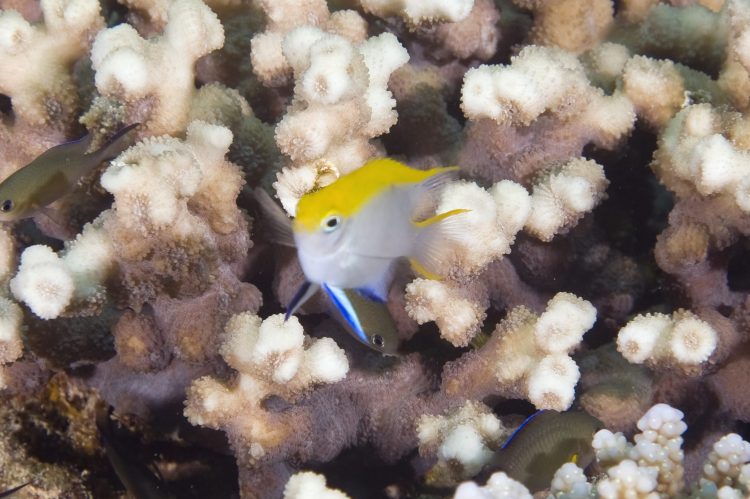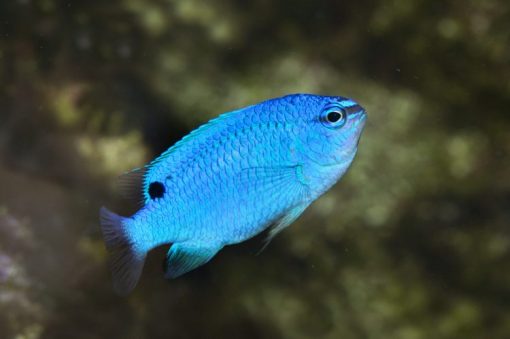Blue Fin Damsel
Are you thinking about adding a blue fin damsel to your aquarium? This vibrant fish is a popular choice among both beginner and experienced fish owners. In this post, we'll cover everything you need to know about blue fin damsel care, including their diet, habitat, and behavior.
Pain Points
Blue fin damsels are known for being aggressive towards other fish in their tank. This can be frustrating for owners who are looking to create a peaceful community of fish. Additionally, these fish require specific water conditions and can be sensitive to changes in temperature and pH levels.
The Target of Blue Fin Damsel
Blue fin damsels are native to the Indo-Pacific region and are found in coral reefs throughout the area. They are small but active fish, typically growing to around 4 inches in length. These fish are often kept in saltwater aquariums and are a popular choice for those looking to add color to their tank.
Summary
In summary, blue fin damsels are a popular fish choice for their vibrant color and active behavior. However, owners should be aware of their aggressive tendencies and specific care requirements. Keep reading for more information on these fascinating creatures.
My Experience with Blue Fin Damsel
When I first added a blue fin damsel to my tank, I was struck by their electric blue color. However, I quickly realized that they could be quite aggressive towards other fish in the tank. To combat this, I made sure to include plenty of hiding spaces in the aquarium, and I monitored their behavior closely. Despite their aggressive tendencies, I've found that blue fin damsels can be a great addition to a saltwater tank if cared for properly.
Blue Fin Damsel Habitat and Behavior
As mentioned earlier, blue fin damsels are found in coral reefs throughout the Indo-Pacific region. They thrive in saltwater aquariums with plenty of hiding spaces, such as rock formations or artificial caves. These fish are active swimmers and appreciate a tank with plenty of open space for them to explore.

When it comes to behavior, blue fin damsels are known for their territorial tendencies. They can be aggressive towards other fish in the tank, particularly other blue fin damsels. However, they can coexist with other fish as long as there is plenty of space and hiding spots available. Some owners have had success keeping blue fin damsels with other small, peaceful fish.
Diet and Feeding
Blue fin damsels are omnivores and will eat a variety of food, including flakes, pellets, and frozen or live foods. They appreciate a varied diet and should be fed at least twice a day. Owners should be careful not to overfeed their blue fin damsels, as this can lead to health issues.

Reproduction and Breeding
Blue fin damsels are relatively easy to breed in captivity. They are monogamous and will form long-term bonds with a mate. The female will lay eggs on a flat surface, and the male will fertilize them. Owners may need to separate the breeding pair from other fish in the tank during this time to protect the eggs.
Frequently Asked Questions
What is the lifespan of a blue fin damsel?
Blue fin damsels typically live for around 5 years in captivity, although they can live longer with proper care.
What is the ideal temperature for a blue fin damsel tank?
Blue fin damsels thrive in water that is around 76-82 degrees Fahrenheit.
Can blue fin damsels be kept with other fish?
Yes, blue fin damsels can coexist with other peaceful fish in the tank as long as there is plenty of space and hiding spots available.
Do blue fin damsels require any special care?
Blue fin damsels require specific water conditions and can be sensitive to changes in temperature and pH levels. Owners should also monitor their behavior closely and provide plenty of hiding spots in the tank.
Conclusion
Overall, blue fin damsels are a popular and fascinating fish choice for saltwater aquarium owners. While they can be aggressive towards other fish, owners can combat this by providing plenty of hiding spaces and closely monitoring their behavior. With proper care, blue fin damsels can thrive in a saltwater tank and add a vibrant pop of color to the aquarium.
Gallery
Underwater Photographs Tenerife: Blue Fin Damsel

Photo Credit by: bing.com / tenerife underwater photographs
Bluefin Damsel Juvenile For Sale (Neoglyphidodon Melas). TOP Care Facts

Photo Credit by: bing.com / bluefin damsel juvenile reefs4less
Blue Damsel | Prestopets

Photo Credit by: bing.com / damsel
Yellowtail Blue Damsel – Frags 2 Fishes | Live Saltwater Fish & Corals

Photo Credit by: bing.com / yellowtail damselfish chrysiptera damsel aquarium parasema saltwater frags2fishes pesti w2r liveaquaria
Blue Damsel For Sale (Chrysiptera Cyanea). TOP Care Facts. Reefs4Less.com

Photo Credit by: bing.com / damsel reefs4less

0 Response to "Blue Fin Damsel"
Post a Comment